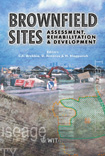Database Integration In A Multimedia-modeling Environment
Price
Free (open access)
Transaction
Volume
55
Pages
Published
2002
Size
356 kb
Paper DOI
10.2495/BF020331
Copyright
WIT Press
Author(s)
K. Dorow
Abstract
Integration of data from disparate remote sources has direct applicability to modeling, which can support Brownfield assessments. To accomplish this task, a data integration framework needs to be established. A key element in this framework is the metadata that creates the relationship between the pieces of information that are important in the multimedia modeling environment and the information that is stored in the remote data source. The design philosophy is to allow modelers and database owners to collaborate by defining this metadata in such a way that allows interaction between their components. The main parts of this framework include tools to facilitate metadata definition, database extraction plan creation, automated extraction plan execution I data retrieval, and a central clearing house for metadata and modeling I database resources. Cross-platform compatibility (using Java) and standard communications protocols (http / https) allow these parts to run in a wide variety of computing environments (Local Area Networks, Internet, etc.), and, therefore, this framework provides many benefits. Because of the specific data relationships described in the metadata, the amount of data that have to be transferred is kept to a minimum (only the data that fulfill a specific request are provided as opposed to transferring the complete contents of a data source). This allows for real-time data extraction from the actual source. Also, the framework sets up collaborative responsibilities such that the different types of participants have control over the areas in which they have domain knowledge-the modelers are responsible for defining the data relevant to their models, while the database owners are responsible for mapping the contents of the database using the metadata definitions. Finally, the data extraction mechanism allows for the ability to control access to the data and what data are made available.
Keywords




